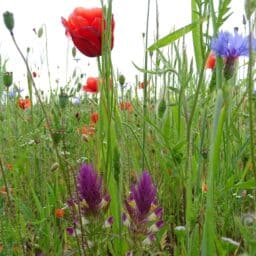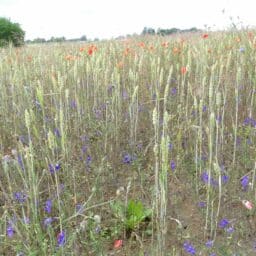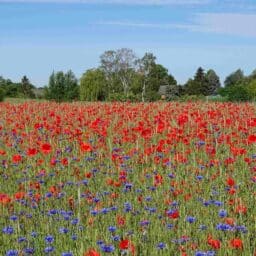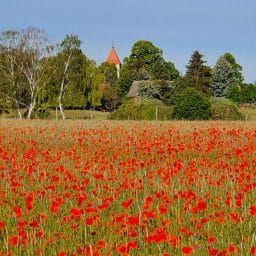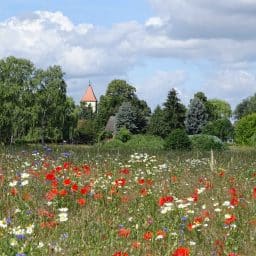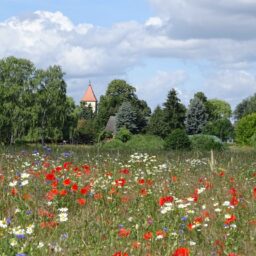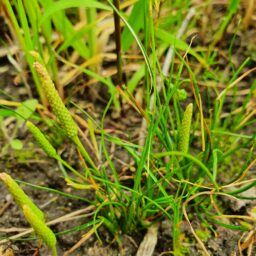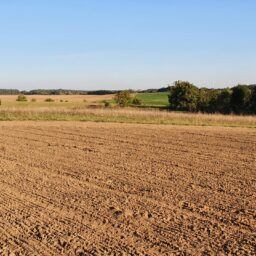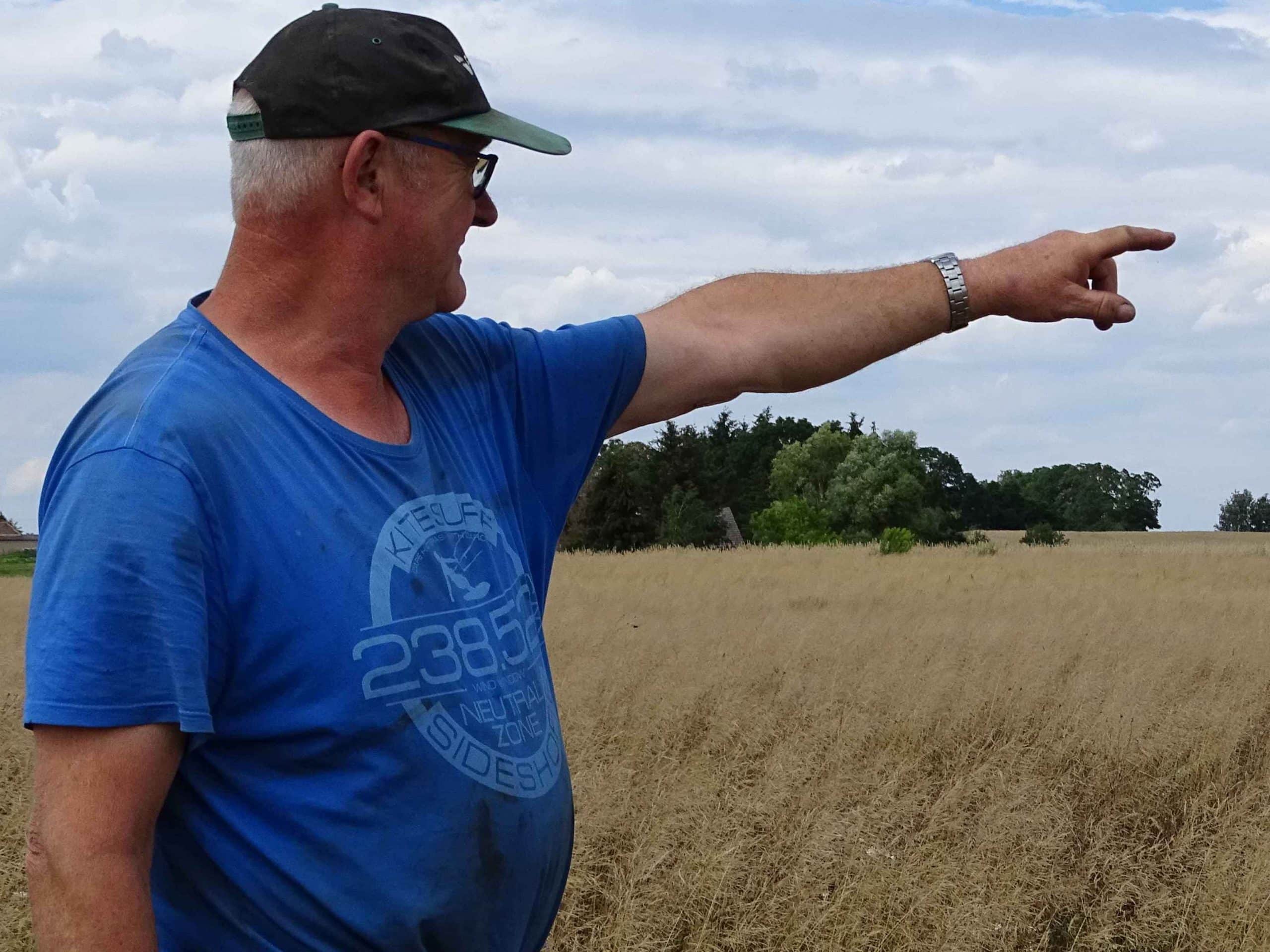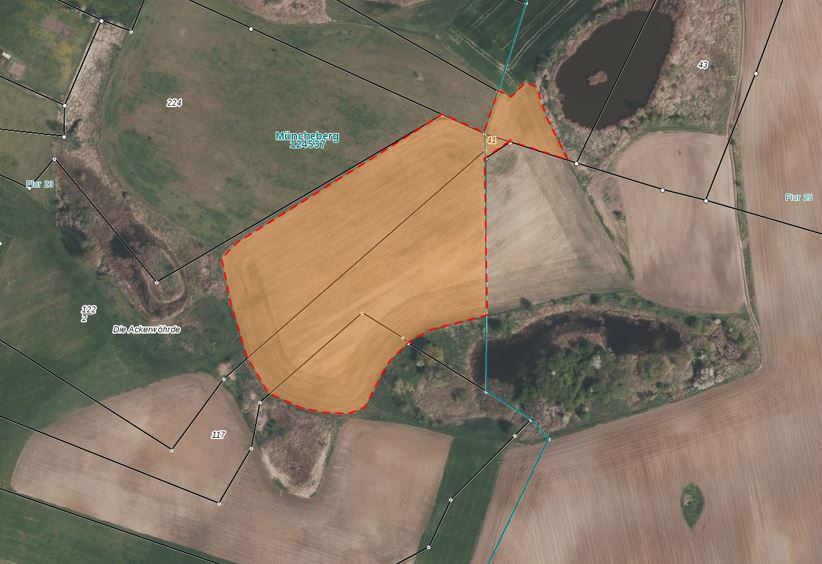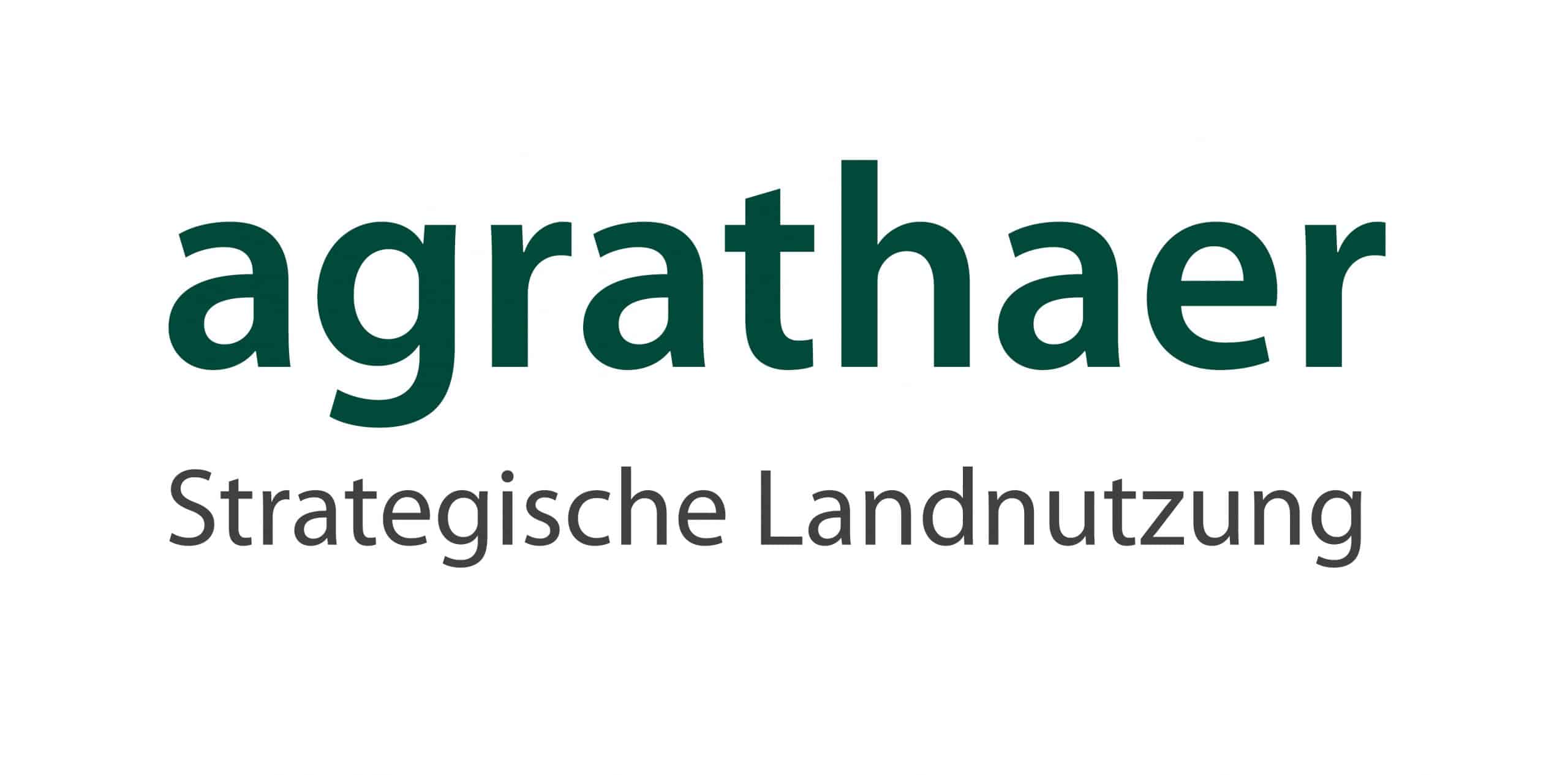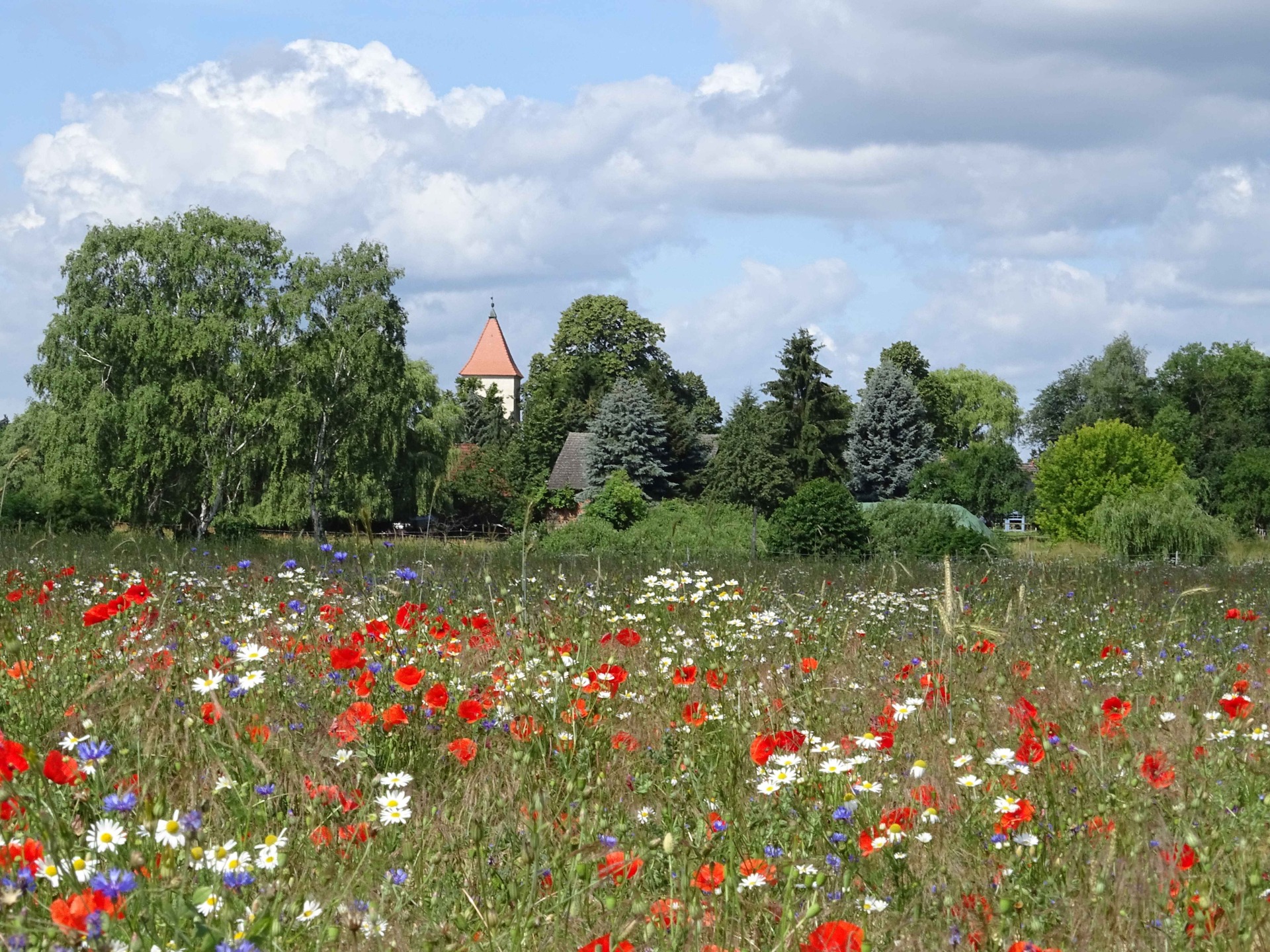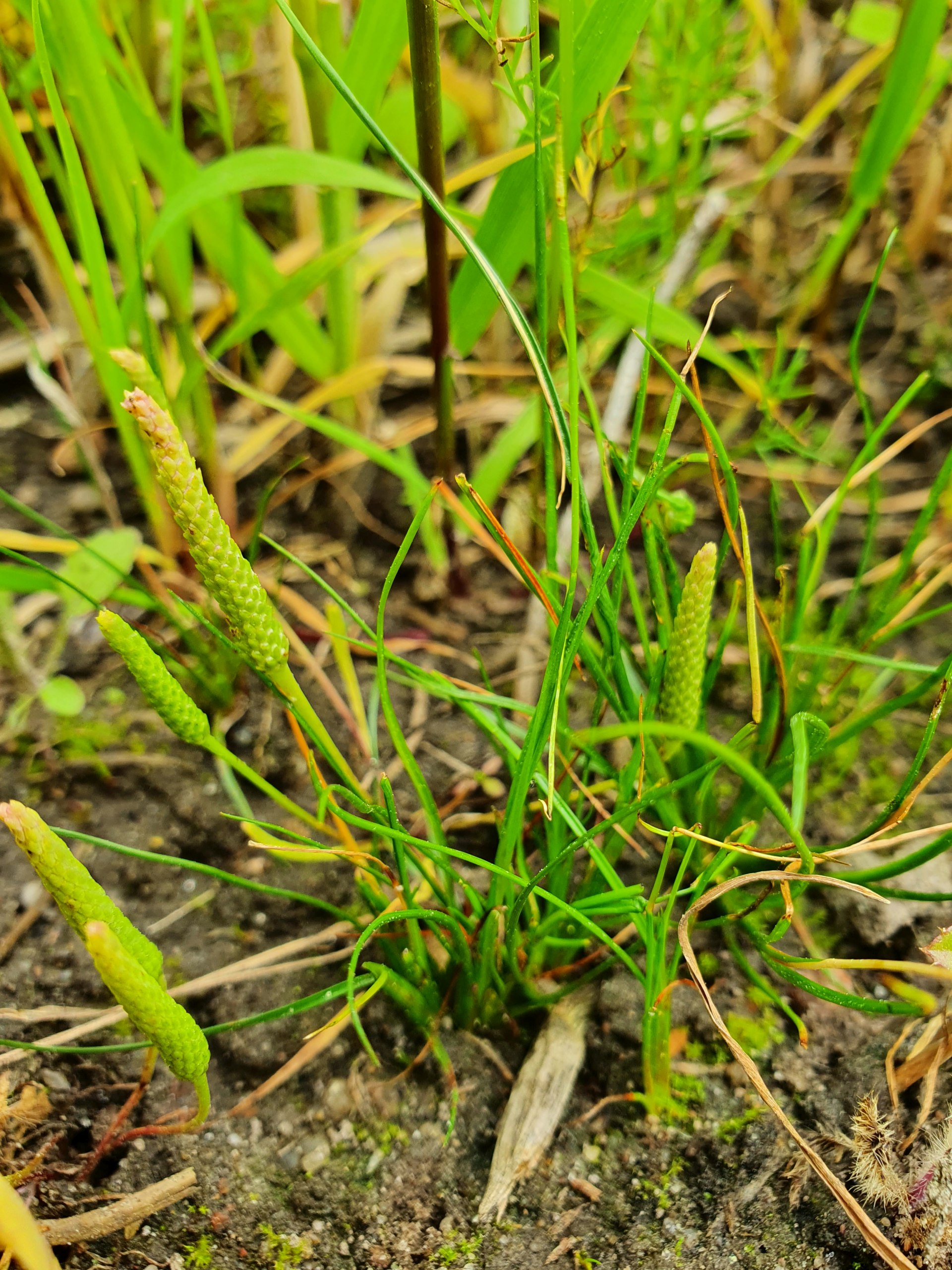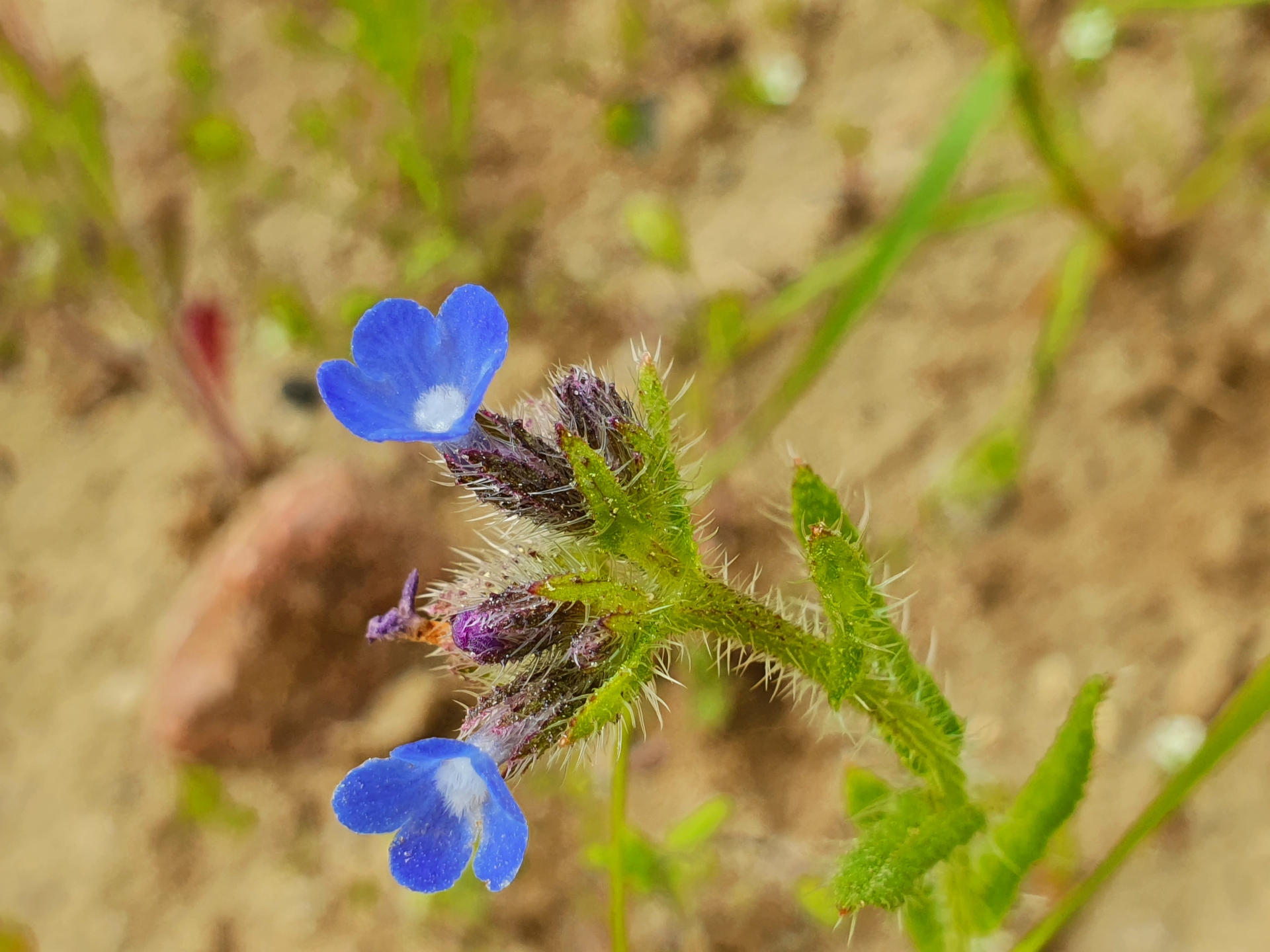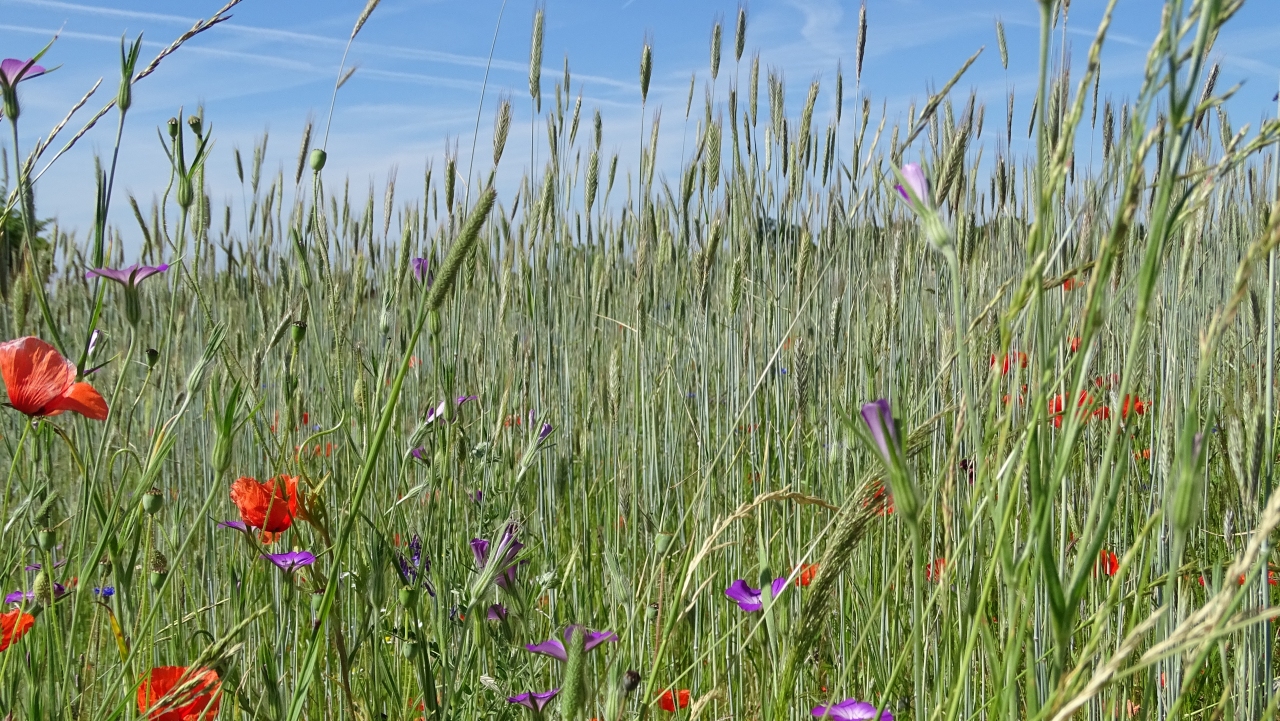Dahmsdorf Poppy Field
Dahmsdorf Extensive Farm in the Flower Kingdom of Märkische Schweiz
Completed
The aim of the project is the preservation and development of species-rich arable wild plant populations. Furthermore, the extensive use of arable land improves the protection of small water bodies adjacent to the project area. With the project, the farmer receives financial support for his particularly high-quality use in terms of nature conservation.
Über das Projekt
Initial situation
Until 2015, the farmland was managed conventionally. Since 2016, state-funded extensification measures have been implemented due to residual occurrences of endangered arable wild plants. In 2019, the manager agreed to continue the extensive management within the framework of an AGORA NATURA project from 2020 onwards.
Why here?
Since the beginning of the extensification measures in 2016, colourful, species-rich field wild herb stands have increasingly developed on the area. Due to the small size of the area, its location on the edge of small water bodies and the heterogeneous soils with only low yield potential, the conditions for a very high nature conservation effect of the project area are very good.
What would happen without the project?
Without the project, more intensive and thus significantly higher-yielding arable land use could take place on the action area.
Only through the extensification measures listed below, which are necessary in addition to the usual arable measures such as soil cultivation, sowing and harvesting, can a species-rich and colourful field vegetation be guaranteed.
Above all, the renunciation of the use of plant protection products significantly improves the living conditions of arable wild plants.
The arable wildlife species diversity achieved since the beginning of the extensification measures can therefore only be maintained and increased through additional financial support.
A more intensive use of arable land would result in a significantly lower diversity of arable wild plants. In particular, the attractive flowering aspects with poppies, cornflowers and camomile could no longer be experienced.
Concrete measures
. strongly extensive cultivation of the area
. winter cereal-based crop rotation with very low crop densities.
. up to 50% reduced seeding rate
. no application of a mineral nitrogen fertiliser and no use of plant protection products.
. No mechanical weed control
. Stubble field phase until September
. Maintenance fertilisation related to a grain yield < 3 t/ha with purely organic fertilisation
. on partial areas of at least 5 % of the area annually alternating one-year fallow land
Protected species
The project area is the habitat of the specially protected skylark. Small water bodies with occurrences of protected amphibian species such as the moor frog and the common toad border directly on the project area.
You invest in the following ecosystem services:
- Field Larkspur
- Small fruited gold of pleasure
- Serrated Rapunzel
- Corn cockle
- Field wild herbs such as field larkspur, small-fruited gold-of-pleasure, serrated rape, corn cockle
Flowering apsects with poppies, coneflowers and camomile species in early summer.
- Skylark
- Moor frog
- Flower-visiting insects benefit from the abundance of flowers in field wild herbs. Wild bees find safe breeding habitats on unimproved fallow strips.
- Amphibians and agricultural birds can use the extensively farmed area as a feeding habitat
- Common toad
- Extensive field, small water bodies and woody plants in the marginal area
Poppy species, cornflower, camomile species, vetches, speedwell species (27 species in total)
Colour variety Red, Blue, White, PurpleCorn poppy, cornflower, camomile species, vetches
Special habitat structures- Partial area with undisturbed soil as wintering habitat
No use of insecticides
Per certificate: 0 - 0.5 kg nitrogen Ground water services (estimation/literature based value)
Total project: 0 - 210 kg nitrogen Ground water services (estimation/literature based value)
So everyone can experience the ecosystem service
- Pictures of the project are published annually on the online marketplace AgoraNatura.
- The area can be visited after arranging with the land user.
Documentation in the implementation phase
The project starts on 01.01.2020 and exactly goes 2years , provided all certificates have been sold.
You will be regularly informed about the progress of the project. For this purpose, the providers can provide short news, picture or audio material. The providers are obliged to report at least once a year whether everything went well with the implementation. If there are difficulties from your point of view, please contact us, the provider itself or the certification body.
Neuigkeiten
Report Poppy Field Dahmsdorf 2021 (02/22)
In 2021, we again looked in spring to see what was growing on our AGORA arable land. In the project year 2021, as in the previous year, the field vegetation was very rich in species and flowers. With 8 species along one transect, the field has a very high natural value. A total of 12 HNV species could be counted on the area.
Variegated field wild plants (speedwell species, poppies, vetches, cornflowers and camomiles) flowered in different colours from April to August, attracting many flowering visitors.
In 2021, amphibian observations were carried out at the adjacent small water body. Moor frogs and common toads were observed.
After the summer harvest, seedbed preparation took place in early October and grain sowing in mid-October.
Report Poppy Field Dahmsdorf 2020 (02/22)
During the monitoring of the extensive field near Dahmsdorf in April and June 2020, a total of 15 HNV species for arable land were found. A very species-rich arable flora is developing on the field plot managed according to the criteria for protected fields. With 5 or 7 species per transect, the field vegetation of the area has a very high natural value. Special species here are the corn cockle, the field scimitar and the field black cumin, which is very rare in Brandenburg. This shows that the extensive field is a valuable site for rare field wild herbs.
The colourful flowering field is used as a feeding habitat by many flower visitors and pollinators. The dominant flower colours were red, blue and white.
In addition to skylarks, yellowhammers were also observed during the spring 2020 survey.
After the harvest in summer, seedbed preparation and grain sowing took place in October.
